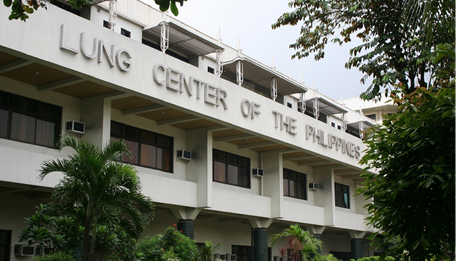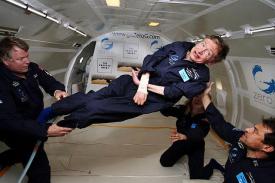Health information technology is seen by many in the US health care industry as indispensable. To such true believers, it is impossible for providers to deliver high quality health care without things like patient portals, cloud storage and the ability to communicate with one’s doctor via e-mail. And absent these digital gizmos, it is impossible for patients to “engage” in their own health care … or so just about every pundit and patient engagement solution endor would have you believe.
Health information technology is seen by many in the US health care industry as indispensable. To such true believers, it is impossible for providers to deliver high quality health care without things like patient portals, cloud storage and the ability to communicate with one’s doctor via e-mail. And absent these digital gizmos, it is impossible for patients to “engage” in their own health care … or so just about every pundit and patient engagement solution endor would have you believe.
But I have to laugh as I sit in my wife’s hospital room in the Lung Center of the Philippines, located in Manila, Philippines, contemplating the fact that the only computer technology I have seen in the hospital is in Admitting and Billing. There they track which room patients are in along with a running account of their list of charges much like a hotel. You see, I needed to get an “extra pillow” and had to buy it from admitting.
Lung Center of the Philippines, located in Manila, Philippines, contemplating the fact that the only computer technology I have seen in the hospital is in Admitting and Billing. There they track which room patients are in along with a running account of their list of charges much like a hotel. You see, I needed to get an “extra pillow” and had to buy it from admitting.
It was convenient being able to charge my purchase to my wife’s hospital room. I’ll have to remember to note that on my wife’s electronic discharge satisfaction survey … oh that’s right … they don’t have one. But I digress.
To some in the US, the absence of a computer in the doctor’s office (or the receptionist’s office) would have sent them scurrying to find a doctor with EMR, Open Notes and the ability to e-mail their doctor. At least that’s what surveys by HIT vendors in the US repeatedly tell us. I have never seen any data, however, to suggest that any significant number of people actually change doctors for this reason.
But not my wife and I … or her huge family that accompanied us on our journey. You see the doctor my wife’s family found not only had excellent professional credentials … but he had something much more important than any EMR and a patient portal.
My wife’s doctors had pretty darn good interpersonal and communication skills … both in Tagalog and English. In the States we would call this a good bedside manner.
I recall that there was a time before computers (yes, there was actually such a time) when physicians in the US actually had to talk to patients in order to diagnose and treat patients and a physician’s bedside manner was important. I don’t think they got paid extra for that … and they found the time to talk to patients … because not to do so was well … bad medicine.
So imagine my surprise when, with only the benefit of a brief oral history, a physical examination, a chest x-ray and ultrasound, the doctor diagnosed a massive pleural effusion and partially collapsed right lung. No MRI or CT scan! Plus her doctor didn’t try to re-diagnose her underlying Stage IV Lung Cancer as always happens when seeing a new physician in the US. The doctor put 1 + 1 together and came up with 2 without all the defensive medicine stuff the US is all to familiar with.
The next day my wife had a chest tube inserted … the fluid in her pleural cavity was drained, her lung re-inflated and her condition markedly improved. Her surgeon, like her pulmonologist, was very personable and highly “engaging” in every sense of the word. So was her anesthesiologist. These doctors wanted to make sure my wife and I … and my wife’s extended family … understood what was going on and why. They solicited our questions, laughed with us, and reassured us that we were in the right place with the right doctors.
Filipinos do not have a “corner on the market” when it comes to good communications. But the culture in the Philippines does place a high premium of treating their fellow “man” (figuratively speaking) as part of their extended family. Smiles are ubiquitous and everyone seems to address others as “ate, kuya, sir or m’am”, all signs of respect and human connectedness.
To physicians here in the Philippines, the expectation that physicians should get paid for “talking to patients” seems a bit insulting. The physicians I met and watched in the Philippines seem to really enjoy talking to and getting to know their patients … and the patient’s extended family. This despite the fact that they see far more patients (and sicker patients) in their office every day than do their US counterparts.
In spite of the widespread lack of health IT in the National Lung Center of the Philippines, doctors show up on time for their appointments, were able to write prescriptions and deliver high quality outcomes. For their part, patients are engaged. They show up for their appointments and no doubt dutifully try to follow their doctor’s orders as best as their understanding and income allows.
The Take Away?
I am not a technophobe or Luddite when it comes to health IT. I do believe however that the role of information technology should be to support … not replace the physician-patient relationship.
It’s time to recognize that, going back to Hippocrates, human connections between those “doing the caring” and those “being cared for” are what health care is about … not whether the doctor communicates uses stone tablets or the latest EPIC EMR software. And that trusted, meaningful relationships, particularly those between physicians and patients, are built and maintained through therapeutic, face-to-face conversations between people … not just emails or patient portals.
More than anything else, people want their physicians to listen to what they have to say. They want to be understood by physicians as thinking, feeling human beings … and not just a disease. But patients are often reluctant to verbalize their health needs and concerns directly to physicians … instead relying upon indirect and often vague verbal and non-verbal “cues” to try to initiate conversations with physicians about their needs and wants. In order to make sense of these “cues” … and respond to them … face-to-face conversations … not some poor digital facsimile … are required.
Clearly health IT offers tremendous opportunities for improving the quality and efficiency of care delivery. But human engagement in health care, from the patients’ and physicians’ perspective, trumps digital engagement as HIMSS’ own 2015 survey “Three Perspectives of Patient Engagement: A National Study” confirms.
Interactive conversations between physicians and patients are how they make sense of what one another says … and how new ideas (i.e., learning) and understanding occurs. Communication science shows that “just giving patients information” via physician-directed monologues or discourses is not how patients “learn” … and alone doesn’t change health behavior.
Instead of investing more money in stand-alone, high tech patient engagement solutions that aren’t integrated into patient exam room conversations between patients and physicians … it’s time for health provider organizations to modify their approach to patient engagement on the front end.
Taking a cue from the Philippines, before we can expect patients to want to engage physicians online … they need to be able to engage with their physicians in person. Only then will it be possible to get patients to migrate over to patient portals and the like in lieu of face-to-face “talk”. This is exactly the reason why Kaiser Permanente and the VA have been so successful getting patients to adopt patient portals and technology. It’s about trusted physician-patient relationships … not technology.
For those interested in taking a more “human approach” to patient engagement, patient satisfaction and physician-patient communications, check out www.mindthegapacademy.com.
Note:
Doctors in the Philippines, unlike their US counterparts, do text patients. My wife was discharged home with the drainage tube in place. Her sister “texts” the amount of drainage to her doctors on a daily basis. But, as my sister-in-law said, this happens only with doctors with whom patients “have an existing relationship.”
It should be noted that the Philippines is the “texting capital” of the world. Phones are not used to make phone call as often as they are used to text.
The post More “Conversations” – Not More Health IT – Are What’s Needed To Increase Patient Engagement And Improve Patient Satisfaction appeared first on Mind The Gap.









